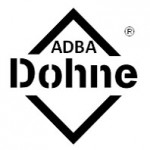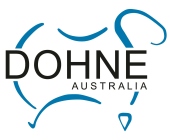Multiple species and farms
The Land – Kate Loudon
It is not often that a producer can move their animals based on the weather but one Carinda local is doing just that.
Producer Michael O’Brien, Carinda, rotates stock between two properties in different climactic areas, one in Carinda, and one near Roma, Qld, to cater for animal feed requirements and seasonal changes.
“We to try to get away with as much as we can with the variable rainfall we are faced with,” Mr O’Brien said.
“When its good, it is very good, when its dry, its very dry, there is not much in-between.
“The idea being to breed the cows in the regional zone of Australia where the rainfall is a little bit more consistent and there’s less need to feed the cows through calving.”
Operating with about 1400 Angus cows and 6000 Dohne ewes between the two properties, Mr O’Brien had been building numbers back up since the drought.

With a couple of years of joining and diligent management, Mr O’Brien said he had numbers back to where he would like them full time.
The sheep were held on to as much as possible during the drought so numbers did not need to be rebuilt as much as the cattle.
Mr O’Brien said new ways of feeding and the introduction of Faba Beans to feeding regiments was very helpful to get the sheep through it.
“As difficult as it was getting through the six years of drought, we have come out the other side of course, very much in good condition due to the very high prices that beasts are making around the world and on the eastern seaboard in general,” he said.
The self replacing Angus herd exclusively used Te Mania bulls and had done so for many years so all females within the herd were some percentage Te Mania blooded.
In selecting the cattle, Mr O’Brien said he used estimated breeding values quite heavily.
“The overall figures on the bulls are very restricted and I must say I still rely on the physical aspects and I like going to the bull sales,” Mr O’Brien said.
“The seasonal conditions have been excellent and the calving had been great.”
The Dohne’s were all self replacing using Maquarie Dohne rams with Mr O’Brien saying he purchased from the annual sale each year as numbers required.
“They grow a bit more quickly than a Merino so most years we can get a wether lamb off in to the fat market,” Mr O’Brien said.
“We can run a wether lamb for six months and then sell them.”
“It is about putting more meat on the table and that is why we concentrate on running the Dohne.”
In the spring, Mr O’Brien said he can have about 8000 to 10,000 sheep between the two properties.
Rotating the livestock between the properties was a clear solution to Mr O’Brien for meeting feed requirements of the stock and maintaining pastures.
“The Dohnes are suited to the country at Carinda whereas the cattle aren’t so much and vice versa, they are far more at home on the flooding plains in Queensland,” Mr O’Brien said.
“Where its most suitable to run cattle, we do, and where its most suitable to run sheep, we do. It is quite an exciting operation really.”
“I have even spread my wings and we are going to run a few goats as well, some of the country is a bit light for the sheep and will probably be better suited to goats so we are going to try them.”
With the variability of seasonal conditions, stocking rates varied month by month, but having the two properties allows for stocking adjustability..
“You have got to be flexible a bit, the country at Carinda, with a season like we are having, you can’t stock it, and for the six years of the bad drought, we have to augment by hand feeding the stock,” Mr O’Brien said.
Lambs were sold ideally as fat weaners and steers were sold as yearlings around 350 kilograms for the feeder market.
“Our main operation is to put the calf on the ground, grow the calf out to a weight and then pass it on to the feed lotter who then takes it to the stage where it goes to processing,” Mr O’Brien said.
“It is a three pronged attack and we are at the start by getting the calves and lambs on the ground,” he said.












